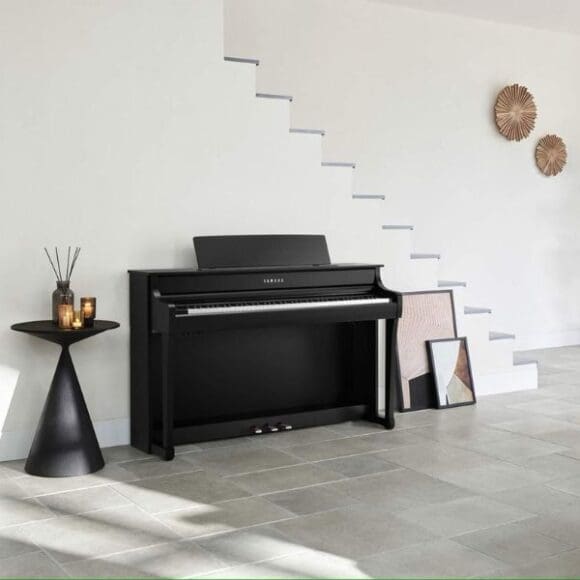Here at Richard Lawson Pianos, we are not only suppliers of pianos, but also enthusiasts who are passionate about playing the piano and know how to best care for them. Today we are going to focus on piano cleaning techniques which you can use on your piano. Pianos are comparatively delicate instruments, comprising of different components that require a particular kind of attention when it comes to cleaning. Read on to find out how best to protect your piano from dust and dirt, and to keep all of its surfaces clean.
The Finish
You can use a feather duster or soft cloth to lightly brush off surface dust from the finish of the piano’s cabinet. You can use specialist piano wax and polish, but, for peace of mind, do check with us about whether the brand of wax you are thinking of using is suitable for your particular piano model.
The Keyboard
The keyboard is a vital area to clean as it has nooks and crannies where dust can build up. You should clean the keyboard using a different soft cloth from the one for piano finishes. To clean, dampen the cloth in a diluted solution of a neutral detergent, making sure to wring it out, and wipe away any dirt you notice.
Dealing with Discolouration
Over time, you may notice discolouration on your white keys. Use a solution of one-part dish soap and four parts water and employ special piano cleaning techniques. This includes starting from the lowest white note and working your way up, rubbing each key from back to front, one octave at a time, using another cloth to dry the keys. Following this, wipe down all the fronts, repeating the process for the black keys. Use your dry cloth to wipe away any leftover dirt. If the discolouration is really bad, we would recommend using a professional piano cleaning service, to properly dismantle the piano and deep-clean the keys.

What Not to Do
When cleaning your piano, you should avoid using chemical-impregnated wipes or cleaning agents with unsuitable chemical compositions. Never use any alcohol, including rubbing alcohol and denatured alcohol on the keys, as this can cause cracking. Avoid spraying your cleaning solution directly onto the keys as the liquid could seep between the keys and cause damage. Use the piano cleaning techniques described above and don’t wipe from side to side, in order to keep the keys’ alignment. Avoid moving dust around, which can cause the keys to stick. Likewise, you shouldn’t wipe from the front to the back as dust could be pushed behind the keys, rather than off them. Even with tougher stains, you should never use a scouring pad or scrubbing brush as it could dull or scratch the surface of the keys.
Prevention First
Firstly, to avoid the need to clean your piano more that necessary, you should always make sure your hands are clean when playing it. This is especially true when children play on the piano, preventing any sticky fingers making the piano keys dirty. Make sure to be consistent and regularly dry wipe the keys, ideally on a daily basis. Closing the lid of your piano when you are not playing also protects your piano from a build-up of dust and dirt, as well as making sure no spillages occur. Keeping up with daily practice can also allow for some time to air the keys and let them breathe.
Contact Us For more information about how to clean your piano, please complete our contact form or email us at info@richardlawsonpianos.com. You can also reach us by calling us on 01923 720974 to speak to a member of our team directly. Based in Hertfordshire, we will be happy to help any customers across the whole of the UK.















 Reviews
Reviews